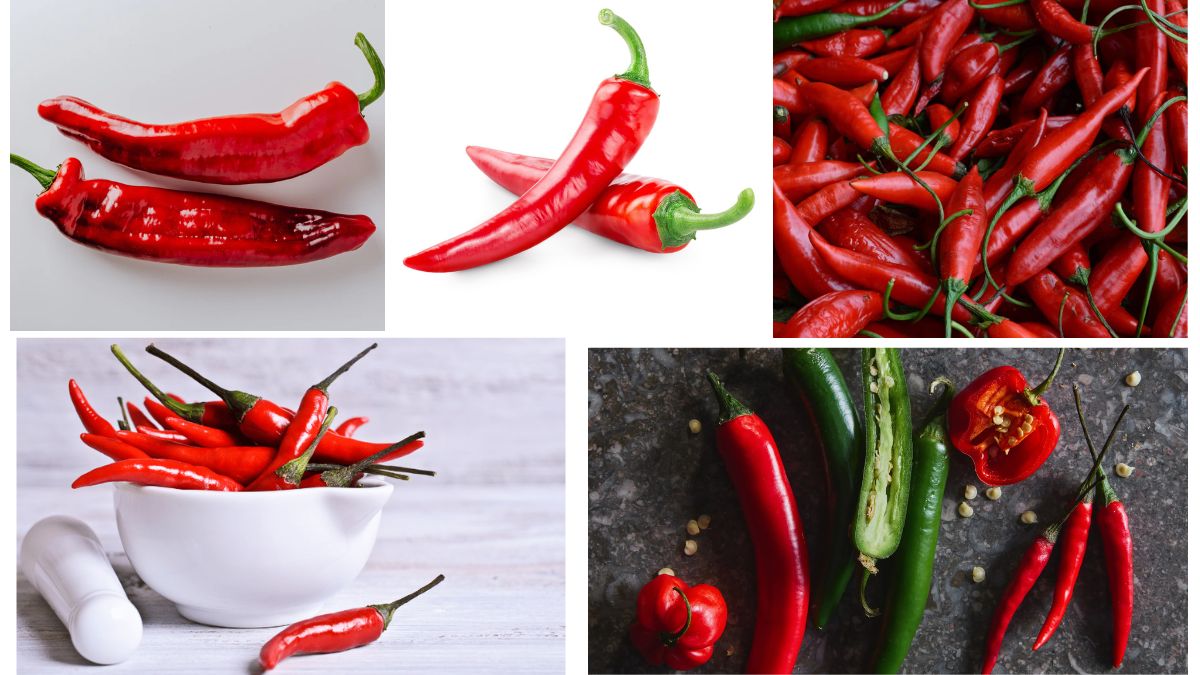Chili peppers, the fiery jewels of the culinary world, are much more than just a source of heat in food. From hot sauces and curries to pickles and powders, chili peppers are a staple in kitchens across the globe. They are also valued in pharmaceuticals, cosmetics, and even as natural pest repellents. But beyond their culinary appeal lies an impressive global trade and agricultural economy.
When it comes to chili production, one country stands far ahead of the rest—India. With ideal growing conditions, vast cultivation areas, and a strong cultural affinity for spice, India is the largest chili producer in the world.
In this detailed article, we explore the global chili landscape, India’s dominance in chili cultivation, its varieties, economic importance, export strengths, and how other countries compare in this hot competition.
The Global Chili Market Overview

Chili peppers (Capsicum spp.) are believed to have originated in the Americas, particularly Central and South America. Since their global spread after the Columbian Exchange, they have become an essential spice in nearly every major cuisine.
There are two major types of chili production worldwide:
- Green chilies: Often consumed fresh
- Red chilies: Usually dried and used as a spice or in processed forms like powder and paste
Chili production requires warm climates, moderate rainfall, and well-drained soil. Over 4 million hectares of land globally are used for cultivating chilies, producing over 40 million metric tons annually.
India: The Global Leader in Chili Production

1. Production Scale
India is by far the largest producer of chilies in the world, contributing over 40% of the world’s total chili output. According to the Food and Agriculture Organization (FAO), India produces more than 18 million metric tons of green chilies and around 1.9 million metric tons of dried red chilies annually.
This massive production places India ahead of other major chili-producing countries such as China, Thailand, Ethiopia, and Bangladesh.
2. Major Chili-Growing States in India
Chili cultivation in India is widespread, but the most prominent chili-producing states include:
- Andhra Pradesh – The largest producer; known for high-yield and spicy varieties
- Telangana
- Karnataka
- Maharashtra
- Madhya Pradesh
- Odisha
- Tamil Nadu
Andhra Pradesh alone contributes to over 35% of the country’s chili output, making it the “Chili Bowl of India.”
Top 10 Chili Producing Countries (Latest FAO Data)

| Rank | Country | Annual Production (Metric Tons) |
|---|---|---|
| 1 | India | ~18 million (green) + ~1.9 million (dry) |
| 2 | China | ~16 million |
| 3 | Thailand | ~3 million |
| 4 | Ethiopia | ~2.8 million |
| 5 | Bangladesh | ~2.5 million |
| 6 | Pakistan | ~2.2 million |
| 7 | Mexico | ~2 million |
| 8 | Indonesia | ~1.8 million |
| 9 | Vietnam | ~1.5 million |
| 10 | Nigeria | ~1.4 million |
India’s numbers are bolstered by both green (fresh) and dried chili categories, giving it a clear lead.
Popular Chili Varieties Grown in India

India boasts a wide range of chili varieties, each with unique heat levels, flavor, and market value:
- Guntur Sannam (S4) – High pungency and widely exported from Andhra Pradesh
- Byadgi – Mild, deep red color, favored in spice blends and cosmetics
- Kashmiri Chili – Mild in heat but prized for vibrant red color
- Teja – One of the spiciest Indian varieties
- Bird’s Eye Chili – Small but intensely hot, mostly grown in northeastern states
These varieties are either consumed fresh, dried, or processed into powders, pastes, and sauces.
India’s Chili Export Power

1. Global Export Leader
India is also the largest exporter of dried red chilies in the world. According to the Spices Board of India, it exports over 500,000 metric tons of chili annually, accounting for more than 50% of the global dried chili trade.
2. Major Importing Countries
India exports chili to over 100 countries, with major markets including:
- China
- Thailand
- Vietnam
- Bangladesh
- Malaysia
- United States
- Sri Lanka
- Mexico
India’s chilies are prized for their intense flavor, rich red color, and customizable pungency levels.
Economic Impact of Chili Production in India
Chilies are an essential cash crop for millions of Indian farmers. The chili industry:
- Supports over 2 million farming households
- Provides employment in processing, packaging, and export industries
- Contributes significantly to India’s agricultural export revenue
Chili cultivation also promotes rural women empowerment through participation in farming, drying, and value-added processing.
India’s Chili Supply Chain and Processing
India has developed a robust chili supply chain that supports both domestic consumption and international trade:
- Primary Processing: Harvesting, drying, and grading
- Secondary Processing: Powder production, oil extraction, and oleoresin processing
- Cold Storage Facilities: Extended shelf-life and better price realization
- Spice Parks: Government-supported hubs for cleaning, packaging, and export readiness
Challenges Faced by Chili Farmers in India
Despite its dominance, India’s chili industry faces several challenges:
1. Pest and Disease Management
Chili crops are susceptible to pests like thrips and whiteflies, and viral diseases such as leaf curl and mosaic virus can devastate yields.
2. Price Volatility
Fluctuations in market demand and inconsistent export prices can lead to uncertainty for farmers.
3. Climate Change
Unpredictable rainfall, rising temperatures, and droughts have begun affecting chili yields in several regions.
4. Post-Harvest Losses
Traditional drying methods often lead to contamination, fungal growth, or loss of color and pungency if not managed properly.
Sustainability and Innovation in Chili Cultivation
To tackle these issues, several steps are being taken in India:
- Integrated Pest Management (IPM) techniques
- Organic chili farming to meet the growing demand in Western markets
- Contract farming models to stabilize prices and guarantee buyback
- Digital marketplaces and agri-tech apps to give farmers access to real-time prices and weather alerts
China: A Close Competitor
China, the second-largest chili producer, also has a well-organized spice industry focused on both fresh consumption and export. Chinese chilies are particularly popular in East Asian cuisines and are exported heavily to Japan, Korea, and Southeast Asia.
Unlike India, China emphasizes value-added chili products such as pickled chilies, chili sauces, and chili oil, which dominate international supermarket shelves.
The Rise of Other Producers
Countries like Ethiopia, Thailand, and Mexico are rapidly expanding their chili cultivation to meet regional and global demand.
- Ethiopia: A major African chili hub with increasing exports to Europe and the Middle East
- Thailand: Known for super-hot varieties used in sauces and seafood dishes
- Mexico: Famous for native varieties like Jalapeño, Habanero, and Poblano; dominates North American chili markets
While none of these countries come close to India’s production, they play a key role in diversifying the global chili trade.
Chili in Global Culture and Cuisine
Chili peppers are not just an agricultural product—they are a cultural icon in many countries. From fiery Indian curries to Mexican salsas and Korean gochujang, chilies are celebrated across cuisines. They’re also a part of festivals, traditional medicine, and even used in self-defense sprays.
Moreover, with the rise of health-conscious eating, chili consumption is growing due to its:
- Metabolism-boosting effects
- Pain-relief properties (capsaicin)
- High Vitamin C and antioxidant content
Conclusion
India’s position as the largest chili producer in the world is built on a foundation of rich agricultural tradition, ideal climatic conditions, and a highly diversified spice market. With millions of farmers involved and a powerful export network, India’s chili industry continues to thrive even amid global competition.
While countries like China and Ethiopia are making strides in chili production and processing, India’s dominance remains unmatched. However, to stay ahead, India must invest in sustainable farming practices, advanced processing, and better market access for smallholder farmers.
In a world where the appetite for spice is only getting stronger, India’s fiery legacy as the chili capital of the world is secure—but the heat of competition is rising.





